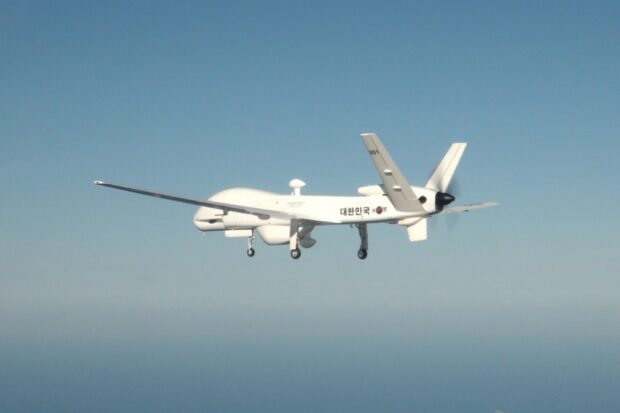South Korea has begun production of medium-altitude unmanned aerial vehicles (MUAVs) to enhance the military’s surveillance over North Korea, the state-run procurement agency said Thursday.
In December, the Defense Acquisition Program Administration (DAPA) signed a 471.7 billion-won (US$353.6 million) deal with Korean Air, South Korea’s biggest airline, along with two defense firms, LIG Nex1 and Hanwha Systems, to manufacture advanced spy drones by 2028.
The state-run Agency for Defense Development initiated the MUAV project in 2008 and completed its development in 2022.

The surveillance aircraft is capable of flying at an altitude of 10-12 kilometers and capturing high-resolution images from distances exceeding 100 kilometers. It measures 13 m in length and 3 m in height, and has a wingspan of 25 m.The unmanned aerial vehicle can be used for surveillance, reconnaissance and offensive operations.
The MUAV will be equipped with weapons such as the Cheongeom, domestically produced anti-tank missiles. The vehicle is also expected to exceed the capacity of the American MQ-9 Reaper in some ways.
Its 1,200-horsepower turboprop engine exceeds that of the Reaper’s 900-horsepower engine, and the MUAV’s operation time is 24 hours, longer than the Reaper’s 14 hours. This means the MUAV can carry heavier armaments than the Reaper and operate in the air longer.
South Korea’s path to producing the MUAV has been rocky. Initial discussions occurred in 2006 during the Roh Moo-hyun administration, and development began in 2008. However, the project was dropped temporarily after the government signed a deal in 2011 to adopt the Global Hawk, a high-altitude unmanned reconnaissance aircraft, from the United States.
The Korean government then announced the MUAVs would be completed by October 2017, only to postpone it to December 2018, citing problems in the data link transmissions.
Other issues concerning different parts of the vehicle continued to disrupt the development plan until March 2022, when the MUAV was announced to have met all the relevant defense equipment standards.
Source: Yonhap News Agency

